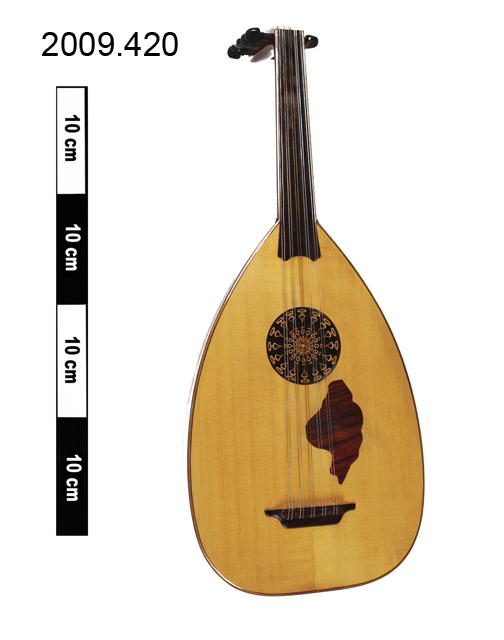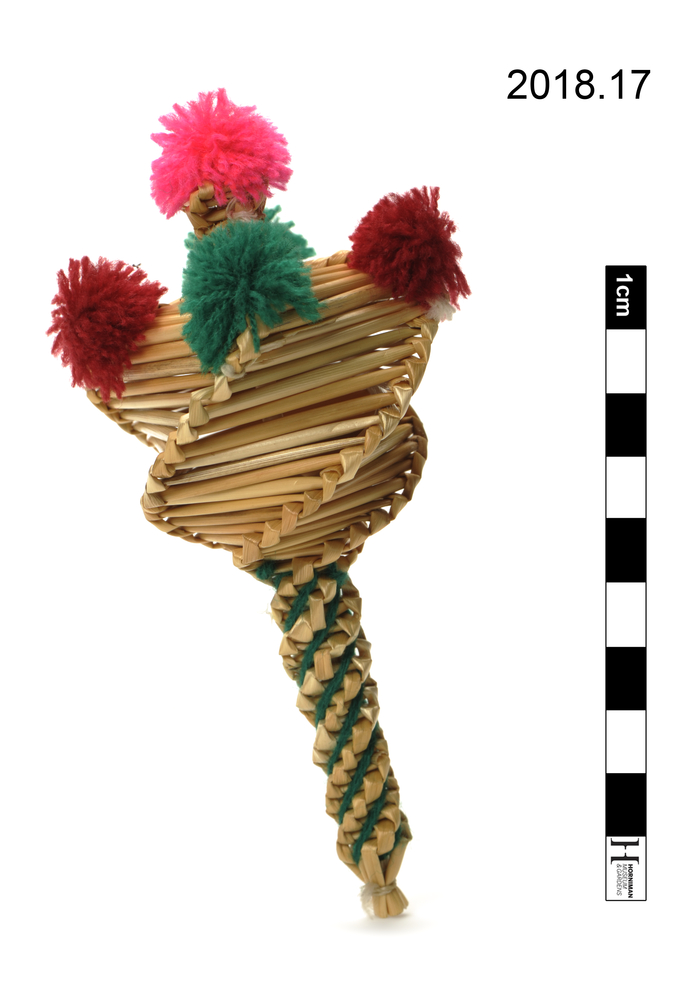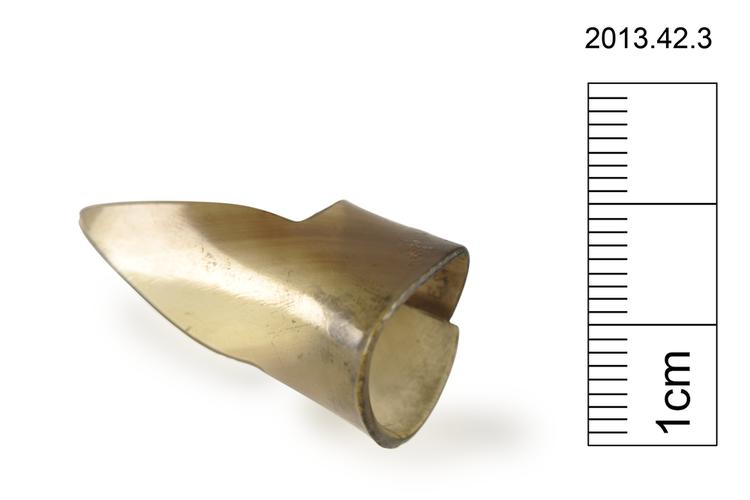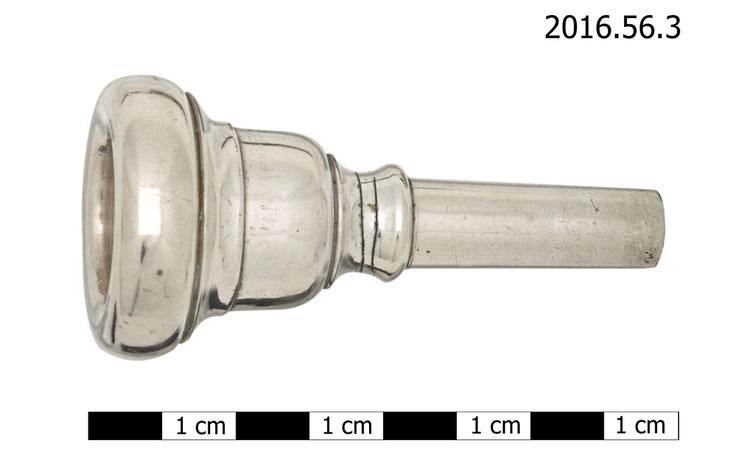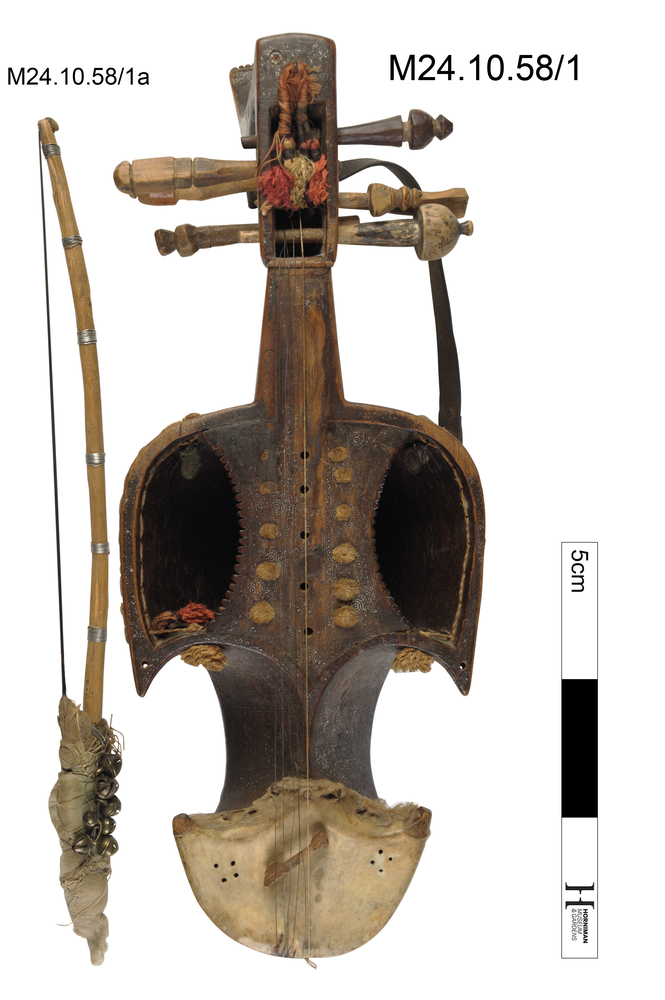

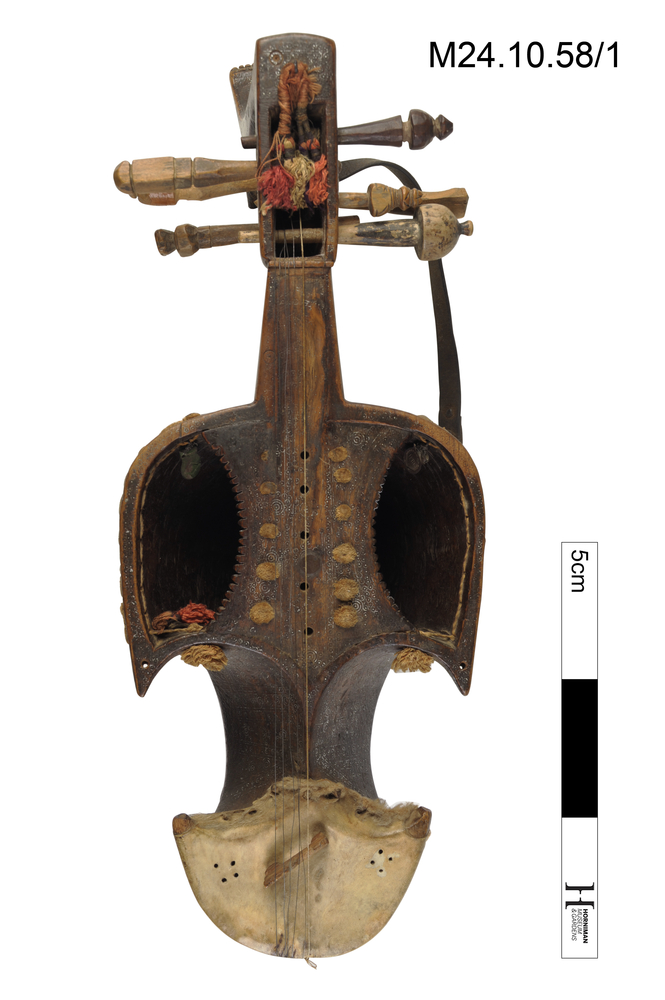


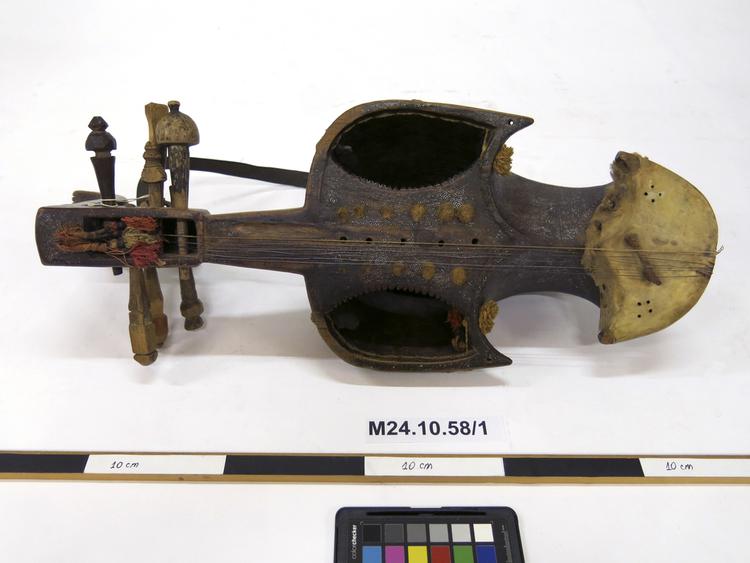

Sorud (or sarinda), a double chested lute; and bow. The body, neck and head are made of one piece of wood. The body is in the shape of a vertically bisected heart, with deep bays on either side forming a narrow waist at the front while leaving the curve of the back undisturbed. The peg-box is round in profile and open at the front. Seven non-matching pegs are set laterally into the peg-box. At present the instrument has six strings, five of wire and one of gut; the missing string seems to have been the only one to have been fingered. The finial is sickle-shaped. The instrument is covered with a design based on concentric circles executed in silver paint, combined with some chip carving. A separate fingerboard is let into the neck, with which it lies flush; this is continued across the open upper part of the resonator. The right-hand part of the fingerboard is deeply grooved. The open edges of the upper bout and the fingerboard extension are decorated with woollen pompoms. Tassels are hung from the peg-box and the left-hand corner of the upper bout. Two metal tags, one stamped 'BOC' the other 'SHELL' are hung inside the cavity of the upper bout. The lower part of the body is covered with a piece of hide, which is pierced at the upper corners with a lozenge pattern of four holes. The skin is pegged to the instrument. A flat bridge is set obliquely on the membrane. The strings are tied to a metal stud on the end of the instrument. A leather strap is attached to the peg-box and upper shoulder. Bow: A plain stick with an outward curve. The hair is passed through a nick at the point and secured by a pad at the heel. The hairs are tied to the stick and a padded grip is provided. Eight brass pellet bells are wired onto the grip.



